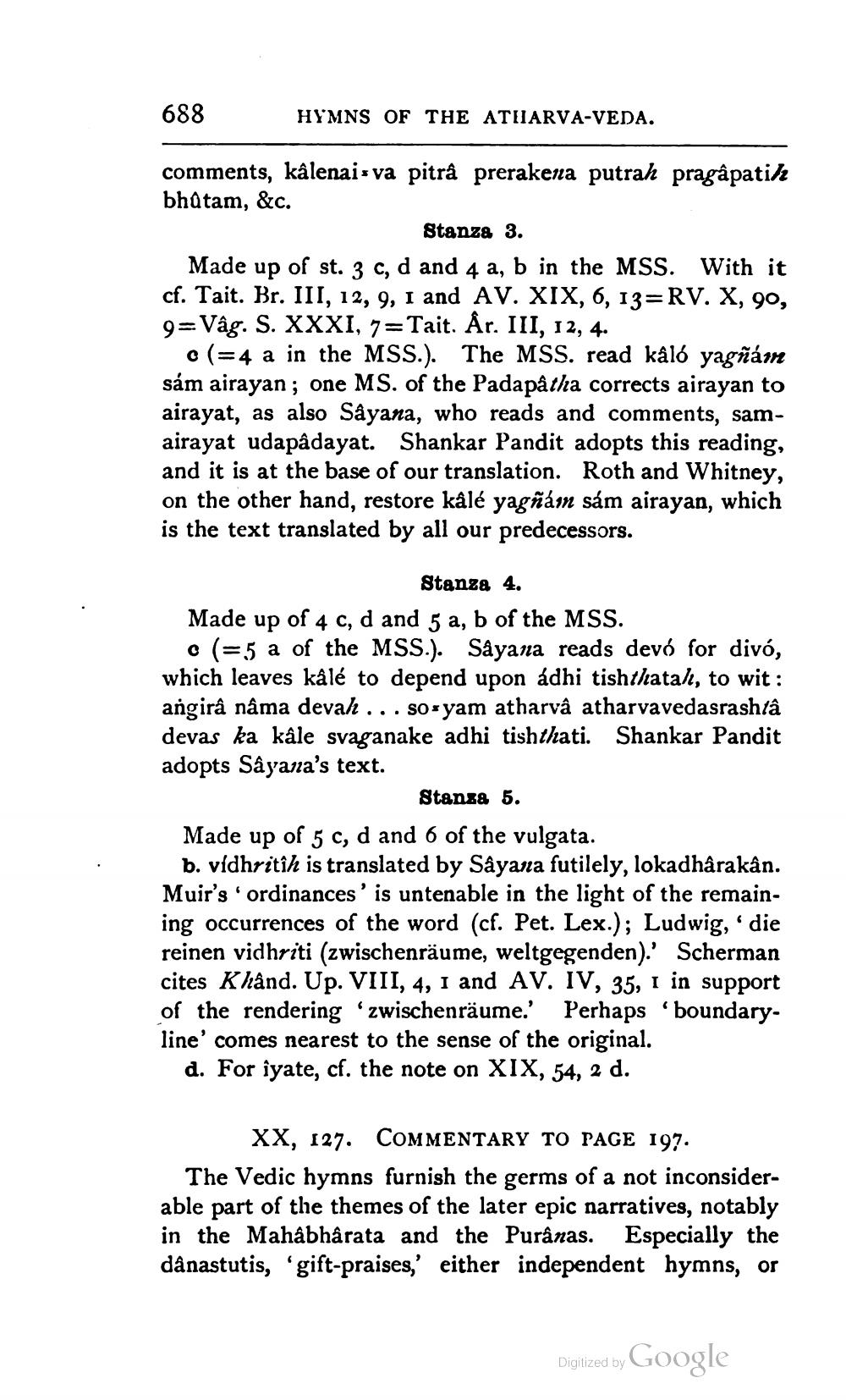________________
688
HYMNS OF THE ATHARVA-VEDA.
comments, kâlenaisva pitrâ prerakena putrah pragâpatih bhatam, &c.
Stanza 3. Made up of st. 3 c, d and 4 a, b in the MSS. With it cf. Tait. Br. III, 12, 9, 1 and AV. XIX, 6, 13=RV. X, 90, 9=Vâg. S. XXXI, 7=Tait. År. III, 12, 4.
. (=4 a in the MSS.). The MSS. read kalo yagñám sám airayan; one MS. of the Padapatha corrects airayan to airayat, as also Sâyana, who reads and comments, samairayat udapâdayat. Shankar Pandit adopts this reading, and it is at the base of our translation. Roth and Whitney, on the other hand, restore kâlé yagñáin sám airayan, which is the text translated by all our predecessors.
Stanza 4. Made up of 4 c, d and 5 a, b of the MSS.
o(=5 a of the MSS.). Sayana reads devó for divó, which leaves kâlé to depend upon ádhi tishthatal, to wit: angirâ nâma devah ... sosyam atharvâ atharvavedasrashtâ devas ka kâle svaganake adhi tishthati. Shankar Pandit adopts Sayana's text.
Stansa 5. Made up of 5 c, d and 6 of the vulgata.
b. vidhritîh is translated by Sayana futilely, lokadhârakân. Muir's ordinances' is untenable in the light of the remaining occurrences of the word (cf. Pet. Lex.); Ludwig,' die reinen vidhriti (zwischenräume, weltgegenden).' Scherman cites Khånd. Up. VIII, 4, 1 and AV. IV, 35, 1 in support of the rendering zwischenräume. Perhaps 'boundaryline' comes nearest to the sense of the original.
d. For îyate, cf. the note on XIX, 54, 2 d.
XX, 127. COMMENTARY TO PAGE 197. The Vedic hymns furnish the germs of a not inconsiderable part of the themes of the later epic narratives, notably in the Mahâbhârata and the Puranas. Especially the dânastutis, 'gift-praises,' either independent hymns, or
Digitized by Google




